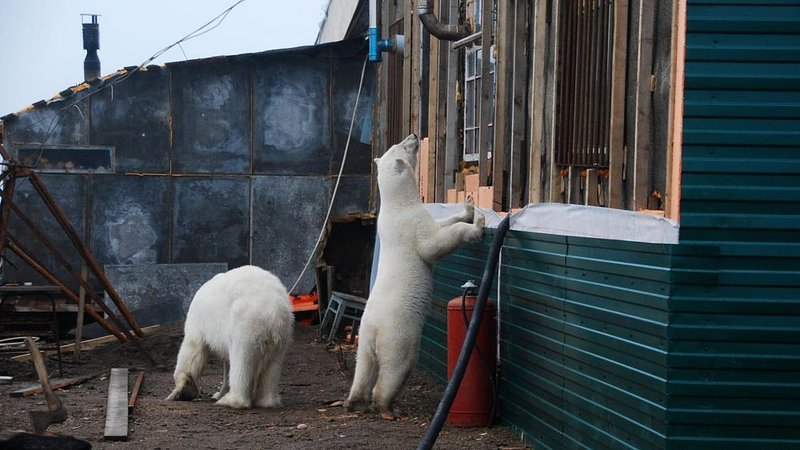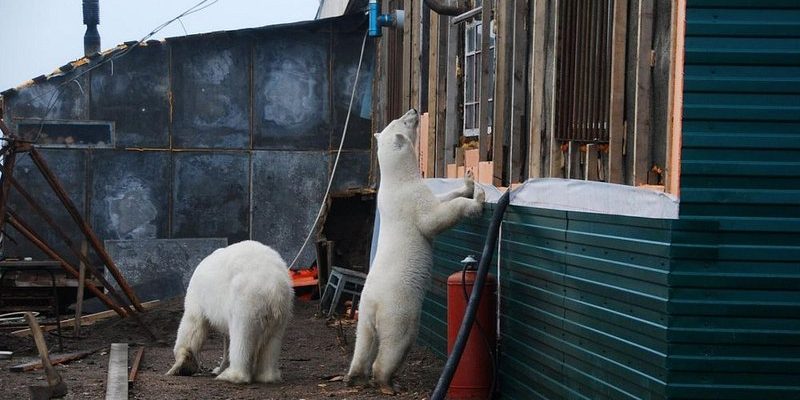
So, let’s dive into the fascinating—and sometimes frightening—world of polar bears. We’ll explore their behavior, the actual risks they pose, and how encounters with them can unfold. By the end, you’ll have a clearer understanding of whether a polar bear could be a threat to you or if they’re just misunderstood creatures of the ice.
Understanding Polar Bear Behavior
First off, it’s essential to grasp how polar bears behave. These magnificent creatures are solitary hunters, primarily roaming the shores and ice of the Arctic in search of food. Their diet mostly consists of seals, which means they’re incredibly adapted to their icy home. But you might be wondering, how does this relate to humans?
Polar bears are instinctively curious and can be described as opportunistic feeders. This means they might approach humans if food is scarce or if they’re curious. Imagine being hungry and stumbling upon a picnic—you’d want to check it out, right? Unfortunately, this curiosity can lead to dangerous encounters. Unlike domesticated animals, polar bears don’t have an inherent fear of humans, making any interaction potentially perilous.
How Often Do Polar Bears Attack Humans?
So, let’s tackle the big question: how often do polar bears actually attack humans? While polar bear attacks are rare, they do occur. On average, there are only a few documented attacks each year, particularly in areas where humans and polar bears frequently cross paths. Most incidents happen in remote Arctic communities, where people live and work close to bear habitats.
However, it’s vital to remember that the vast majority of polar bears will avoid humans when possible. They often prefer to stay away from populated areas. So, while attacks can happen, they’re not as common as you might think. It’s more about how we share their environment that can lead to trouble.
Factors That Increase Risk of Polar Bear Attacks
Several factors can increase the risk of polar bears becoming dangerous to humans. Here are a few key points to consider:
- Food Availability: When food is scarce, polar bears may venture into human-inhabited areas in search of something to eat.
- Season: During fall, when bears are trying to build fat reserves before winter, they may be more active and curious.
- Human Activity: Increased mobility or activities like hunting and camping in polar bear territory can lead to unexpected encounters.
Let’s break this down. If you’re living or working in a remote Arctic area, taking precautions while outdoors is crucial. Simple measures, like storing food securely and being mindful of your surroundings, can significantly reduce the risk of an encounter.
How to Stay Safe Around Polar Bears
Now that we’ve established that polar bears can be dangerous, how do we protect ourselves? Staying safe around these animals requires awareness and proper planning. Here are some steps to help you stay safe:
- Make Noise: When hiking or camping, making noise can alert bears to your presence, encouraging them to stay away.
- Store Food Properly: Keep food in bear-proof containers or stash it away from your camp to avoid attracting their attention.
- Group Up: Bears tend to avoid groups, so if you’re in the wilderness, stick together.
It’s also wise to carry bear deterrents, like bear spray. This can be a lifesaver if you find yourself in close proximity to a bear. Just remember that it’s meant to deter, not to provoke.
Polar Bear Habitats and Human Interaction
Polar bears roam vast, icy expanses, but their habitats are shrinking due to climate change. As sea ice melts, bears are forced to roam farther in search of food. This change can bring them closer to human settlements, increasing the risk of encounters.
With more people traveling to the Arctic for adventure tourism, the likelihood of coming face-to-face with a polar bear grows. This has led to more discussions about coexistence. Tour guides and researchers often highlight the importance of respect for these animals and their habitat. Understanding their behavior is key to minimizing risks.
Conservation Efforts and Polar Bear Safety
Conservation plays a significant role in ensuring both polar bears and humans can coexist safely. Organizations are working hard to protect polar bear habitats by advocating for climate change action and promoting sustainable practices.
By preserving their natural environments, we can help reduce human-polar bear interactions. When these habitats are intact, bears have less reason to wander into human areas. Plus, educating communities about polar bear behavior can help foster a safer coexistence.
In conclusion, while polar bears can indeed be dangerous to humans, it’s essential to remember that they are wild animals acting on instinct. Understanding their behavior, recognizing the factors that increase risks, and knowing how to stay safe can make a world of difference.
By respecting their space and taking precautions, we can enjoy the beauty of these magnificent creatures from a safe distance. After all, it’s about learning to live harmoniously with the incredible wildlife that shares our planet, even in its most remote corners.

